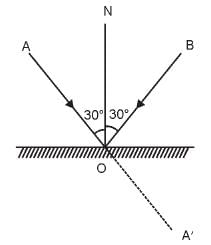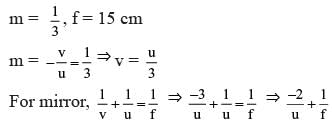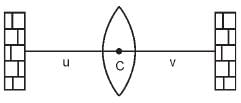Answer: Option A
-
The mirror equation for a spherical mirror is written as:
1/u + 1/v = 1/f
where u is the object distance (positive when the object is in front of the mirror),
v is the image distance (positive when the real image is in front of a concave mirror),
and f is the focal length (positive for a concave mirror). -
At the instant described:
-
f = 10 cm
-
u = 30 cm (object is 30 cm in front of the mirror, so u = +30)
-
v = 15 cm (real image 15 cm in front of the mirror, so v = +15)
Indeed, checking 1/30 + 1/15 = 1/30 + 2/30 = 3/30 = 1/10, which equals 1/f.
-
-
Differentiate the mirror equation with respect to time t:
d/dt (1/u + 1/v) = d/dt (1/f).
Since f is constant, the right side is zero.
This gives:
– (1/u^2) (du/dt) – (1/v^2) (dv/dt) = 0.
Rearranging,
dv/dt = – (v^2 / u^2) × (du/dt). -
At that instant, u = 30 and v = 15. The object moves towards the mirror at 4 cm/s, which means u is decreasing. By sign convention, du/dt = –4 cm/s.
Therefore, v^2 / u^2 = (15^2) / (30^2) = 225 / 900 = 1/4.
So, dv/dt = – (1/4) × (–4) = +1 cm/s. -
A positive value for dv/dt means that the image distance v is increasing, i.e. the real image is moving away from the mirror at 1 cm/s.
Hence, the correct answer is Option d: 1 cm/s away from the mirror.























